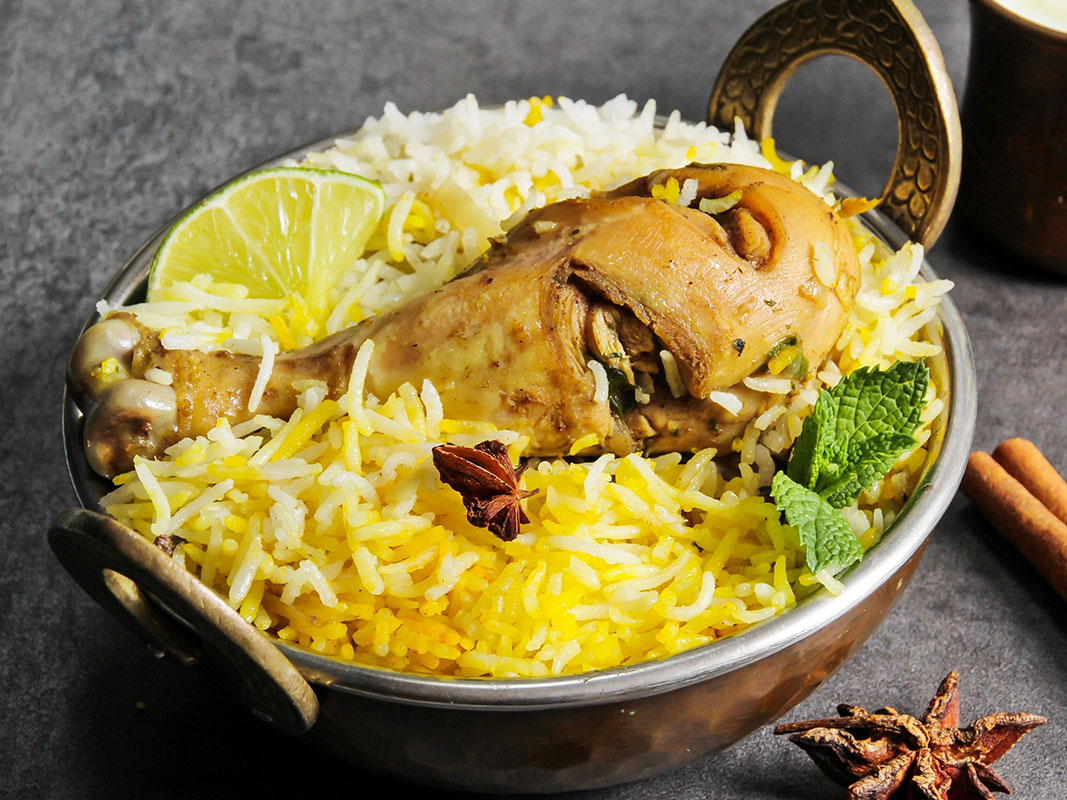We’re kinda buzzed and it’s all because
(This is how we do it)
India does it like nobody does
(This is how we do it)
To all our neighbours we’ve got so much flavour
(This is how we do it)
Let’s flip the track, bring the old school back
(This is how we do it)
Independence Day Hangover, you might ask. But of course, we will answer. Let’s continue the party as we undertake a journey to discover the most prominent cooking styles of India. Here’s today’s fill:
Bhuno
It is a combination of sautéing, stir frying and stewing.
This is not a complete process but it helps to prepare a dish. Oil is added to a kadhai or pan. To this cumin/garam masala, and onions are added. After the onions are browned the desired herbs, spices are added. A small quantity of water and/or stock is introduced to the pan if and when the ingredients start to stick. Subsequently the main ingredient (Licious meat preferably) is added and the same process continues. This ensures that the initial cooking is done in the ingredients’ own juices. After the oil separates from the mixture; some liquid is added to complete the cooking process.
Dum
Dum literally means steam. It is a method of cooking food on a very low flame, with the help of steam entrapped in a sealed container.
It allows the partially cooked ingredients to cook, in their own juices and bone-marrow(especially when it’s juicy Licious meat)
The technique is more than 200 years old. Traditionally dum pukht cooking uses a round, heavy – bottom pot/handi in which the food is tightly sealed and cooked over slow fire. The container is sealed traditionally with a dough that is spread, , like a lid, over the container, to seal the food. This is known as a purdah (veil), which becomes a bread upon cooking, absorbing the flavours of the food and the two are best eaten together. Some times, a metal lid is used to cover the handi and some coal is placed on the lid to ensure proper heat from top and below.
Dum Pukht food is about aroma and flavour. there are also some fresh herbs and spices used for flavouring, and the steam is trapped inside, so the dish retains all the aroma and flavours. And fills the air with its intoxicating scent upon removal of the seal.
Baghar
Baghar is known as Tempering in English. It is also known by different names in different parts of the country – Tadka, chowkna or Ghee durust karna.
This is basically a process by which the aroma and flavour of spices and herbs is infused in the oil which adds flavour to the dish when mixed.
The goal of this technique is to add flavour to a dish instantly. Spices and herbs are added to hot oil/ghee. Hot oil extracts and retains the aroma, essence and flavour of the spices and herbs. This tempering is done in two ways.
1. Before preparing any of the food, the first step is to infuse the desired spices in either oil or ghee.
2. Then, you pour the tempered oil over the food. Spices and herbs cooked this way retain their flavours.
Balchao (Pickling)
A Goan speciality, influenced by the Portuguese, where vegetables like eggplant or seafood like prawns are “pickled” in sugar, vinegar and spices for a day or two before eating.
Zammin doz
This is a style of cooking in which the ingredients are placed in a hole in the ground, covered with mud and topped with wooden charcoal. It is a time taking process and takes around 6 hours.
Dhuanaa
This is a quick smoke procedure used to flavour a meat dish, dals or even raita or salad.
The smoke permeates every grains of the ingredients and imparts a subtle aroma.The process is carried out by glowing charcoal placed in a small bowl, which is then put in a bigger pot. Cooked meats are placed around this. Dry spices and ghee are poured on top of the coals and a lid is quickly placed over the larger pot, the lid is not removed for 15 minutes. This meat enhances the fresh taste of ghee and spice, the coal is then removed and the meat is put through further cooking processes. It is very popular in the cold months of North India, especially in the desert areas.
Tawa Cooking
A tawa is a round, concave, thick iron griddle, . It is used when very high temperatures are needed and is mostly used for Indian unleavened breads like chappati or rotis. It is also used for cooking some unique dishes which require fast cooking where the outer rim is used to keep the dish warm. Popular Indian street food, Pav Bhaji, is a typical tawa dish and needs to be constantly stirred to avoid burning. It is served straight out of the tawa and eaten immediately on sour dough bread. Besides fast food a number of main courses like tawa chicken, tawa vegetables and others are also very popular in this category.
Handi cooking
The concept of Handi cooking is around 600 – 700 years old which has been passed from generation to generation in India. Handi means an earthen pot in which cooking of curries takes place on low flame. Handi comes in different shapes and sizes but the main feature remains the same throughout, which is a thick bottom that ensures that food does not stick. It is a well known fact that the food cooked on low flame preserves the natural characteristics- aroma, flavour & nutrition to its maximum. It is best for preservation of natural characteristic of vegetables, herbs and spice.
Talna
It is the process of cooking food by immersing it in a deep/shallow pan of hot oil and frying.
Ubalna
This is to cook ingredients in liquid with the liquid kept above its boiling point , so that the surface of the water bubbles and turns over continually. There are different degrees of boiling from gently boiling to fast boiling with the surface changing from just gentle bubbling to fairly violent turbulence.
Loab / Rogan
It refers to the final stage of cooking when the oil used during cooking, rises to the surface, giving the dish a finished appearance. This happens when slow cooking of gravy dishes is involved.
So, which Indian style of cooking is your favourite? What combination of styles do you use to serve up the most delicious feast? Which style that you were unaware of, caught your eye? Which one are you going to try today? Comment below, let us know!

